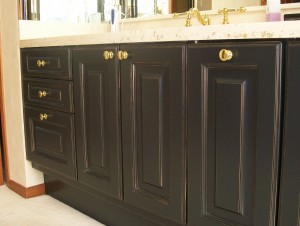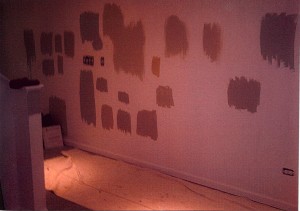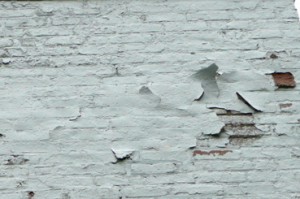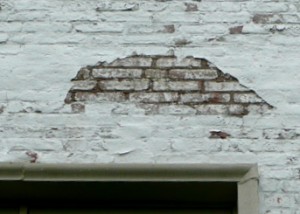Refinishing cabinets can have a dramatic impact on their appearance and the look of an entire room. A client in the Northwest suburbs of Chicago was not happy with the look of their stained oak vanity cabinets. They felt that the doors and trim being stained in the same reddish color as the cabinet, it made the room look too heavy and not interesting enough. They also wanted to find a way of incorporating the gold tones of their faucets and door hardware in the new look of their cabinets.
This was the perfect assignment for Painting in Partnership’s team of craftsmen and decorative artists. The first step for such a house-painting project consists of developing a representative sample for the client’s review. Once the client approves the sample, our task consists of faithfully replicating it unto the cabinets.
Before taking any painting steps, it is important to remove all the hardware from the cabinets and clean the surfaces to ensure that oils and soap residue have been removed. The first painting step consists of priming the surfaces with a bonding primer, so that the finish coats will solidly adhere to the cabinets’ old finish. Our painting craftsmen then apply two coats of waterborne enamel.
Our next step is of a decorative finishing nature. We skillfully apply a very small amount of rubbing gold wax to the various edges of the cabinet doors and drawer fronts, thereby creating a very subtle gold shimmer, as shown in the picture. For this client, just painting the cabinets would not have sufficed. The gold touches made it work perfectly.
Understanding the needs of clients, combined with painting and faux finishing skills can beautify a client’s space. This is the kind of work we do every day at Painting in Partnership.








 Follow
Follow





